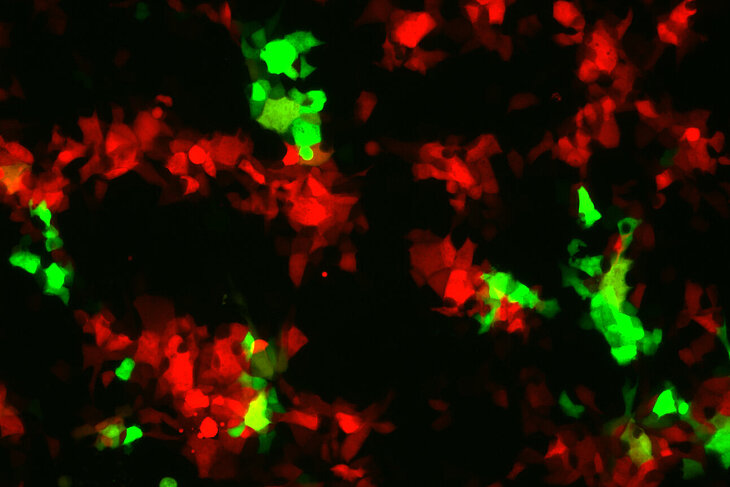The initial situation
Older children and adults usually develop only mild, cold-like symptoms when infected with RSV. However, in young children up to five years of age, individuals with a weakened immune system, and in the elderly, RSV infection can lead to severe pneumonia and in some cases, death. Annual epidemics of RSV occur annually primarily in winter months and early spring.
Although RSV was discovered in 1956, there are still no approved vaccines or effective medications. The only available therapy (Palivizumab) is a passive vaccination based on monoclonal antibodies directed against proteins on the envelope of the virus. This antibody can be used as a preventative therapeutic in infants who are at particular risk to prevent severe disease progression in the event of RSV infection. They receive the antibodies monthly by injection into the muscle during the RSV season, which lasts from November to April.
Although the two main RSV subtypes, A and B, circulate worldwide, research over the past 60 years has focused mainly on RSV A strains. These strains have been used in the laboratory for decades and have adapted accordingly: they show major differences in viral growth, cell fusion and thermal stability compared to the virus strains circulating in the population. Consequently, these strains cannot be used to obtain comprehensive information about the nature of current RS virus strains.
The new method
A research team led by Dr. Martin Ludlow, Project Leader for Virology at RIZ, and RIZ Director, Professor Dr. Albert Osterhaus, have developed a method that makes it possible to investigate the influence of changes in the genetic information of currently circulating RSV A and B subtypes. The virus strains used for this project each came directly from diseased patients. The research team transferred the entire genetic information of the respective subtypes, which in the case of RSV is located on a single strand of RNA, into a so-called complementary DNA, cDNA. This cDNA was used to transfer the genetic information of the virus into a so-called cloning vector (plasmids). This transformation enabled them to stably reproduce the viral genome and also to specifically modify it. In this way, they were able to integrate mutations directly into the viral genome that make the viruses less susceptible to the monoclonal antibody Palivizumab and specifically study their influence on viral fitness and virus-host relationships. Furthermore, this technology made it possible to integrate fluorescent or luminescent proteins into the viral genome as markers to visualize virus infection in infected cells in the laboratory.
From the plasmids created in this way, which contain the manipulated genetic information of the virus, the research team in turn generated so-called recombinant viruses. Fluorescently or luminescently labeled viruses are an important tool in the laboratory for detecting viruses more quickly and effectively in experiments. These recombinant viruses can now be used to test new therapeutic approaches or to gain new insights into the pathway of virus entry into the cell.
"With our new approach, we now have a stable, reliable and simple method to study RSV variants. And with the fluorescent viruses, we can study, for example, the viral and host factors relevant to infection," Ludlow explains. Osterhaus adds, "This new reverse genetics system enables studies in close collaboration with pharmaceutical companies to develop new therapeutic antibodies, antivirals and vaccines. We will combine such studies with in vitro and ex vivo experimental models. They may partially replace our current RSV ferret model“, Osterhaus says.
The study was funded by grants from the EU, Germany and the state of Lower Saxony.
The original publication
Reverse genetics systems for contemporary isolates of respiratory syncytial virus enable rapid evaluation of antibody escape mutants
Jo WK, Schadenhofer A, Habierski A, Kaiser FK, Saletti G, Ganzenmueller T, Hage E, Haid S, Pietschmann T, Hansen G, Schulz TF, Rimmelzwaan GF, Osterhaus ADME, Ludlow M (2021)
PNAS, DOI doi.org/10.1073/pnas.2026558118
Contact
Dr. Martin Ludlow
University of Veterinary Medicine Hannover
Research Center for Emerging Infections and Zoonoses (RIZ)
Phone: +49 511 953-6112
martin.ludlow@tiho-hannover.de
Prof. Dr. Albert Osterhaus
University of Veterinary Medicine Hannover
Research Center for Emerging Infections and Zoonoses (RIZ)
Phone: +49 511 953-6140
albert.osterhaus@tiho-hannover.de




